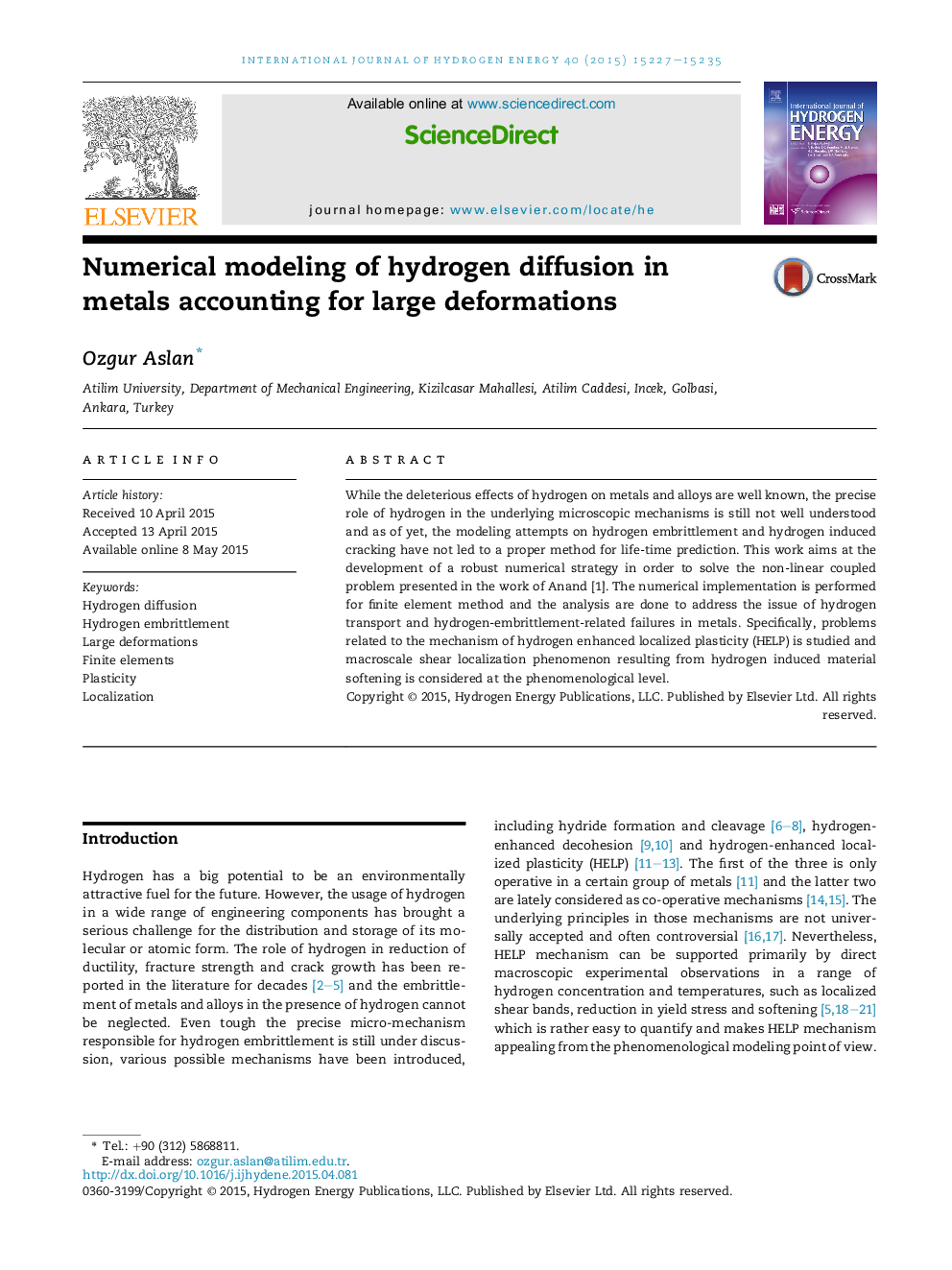| Article ID | Journal | Published Year | Pages | File Type |
|---|---|---|---|---|
| 1274000 | International Journal of Hydrogen Energy | 2015 | 9 Pages |
•A continuum-level model coupling hydrogen diffusion and large deformations is presented.•The mechanism of hydrogen enhanced localized plasticity (HELP) is studied.•Analysis are done to address the issue of hydrogen transport and hydrogen embrittlement related failures in metals.•Good correlation is found between the hydrogen concentration and hydrostatic pressure.•Model is shown to capture the early necking bifurcation and shear banding.
While the deleterious effects of hydrogen on metals and alloys are well known, the precise role of hydrogen in the underlying microscopic mechanisms is still not well understood and as of yet, the modeling attempts on hydrogen embrittlement and hydrogen induced cracking have not led to a proper method for life-time prediction. This work aims at the development of a robust numerical strategy in order to solve the non-linear coupled problem presented in the work of Anand [1]. The numerical implementation is performed for finite element method and the analysis are done to address the issue of hydrogen transport and hydrogen-embrittlement-related failures in metals. Specifically, problems related to the mechanism of hydrogen enhanced localized plasticity (HELP) is studied and macroscale shear localization phenomenon resulting from hydrogen induced material softening is considered at the phenomenological level.
Graphical abstractFigure optionsDownload full-size imageDownload as PowerPoint slide
